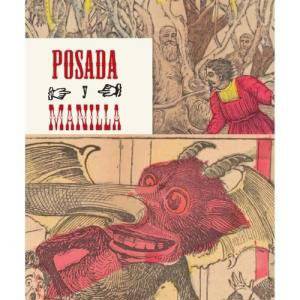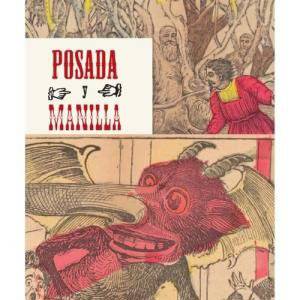
- Afhalen na 1 uur in een winkel met voorraad
- Gratis thuislevering in België vanaf € 30
- Ruim aanbod met 7 miljoen producten
- Afhalen na 1 uur in een winkel met voorraad
- Gratis thuislevering in België vanaf € 30
- Ruim aanbod met 7 miljoen producten
Zoeken
Posada & Manilla: Illustrations for Mexican Fairy Tales
Illustrations for Mexican Fairy Tales
Mercurio Lopez Casillas
Paperback | Engels
€ 29,45
+ 58 punten
Omschrijving
The second half of the nineteenth century was, famously, a golden age for children's literature-in Mexico as well as in North America and Europe. José Guadalupe Posada (1851-1913) and Manuel Manilla (1839-1895) are the two leading icons of children's illustration in Mexico, and together they developed a huge body of engravings and illustrations for cheap, ephemeral, "penny press" collections of Mexican fairy tales. In the early part of the last century, these fragile publications-once so ubiquitous and loved-received scant attention, until they were brought to a wider audience in the 1930s by the French artist Jean Charlot (who encountered them while visiting Diego Rivera). Published on the 100th anniversary of Posada's death, Illustrations for Mexican Fairy Tales gathers these vibrantly colorful works by both artists for the first time, many of which were done for the famous Mexican penny press publisher Antonio Vanegas Arroyo. Affordably priced, and with a wealth of color reproductions throughout, this extremely giftworthy collection includes a facsimile reprint of one of Posada's most beautiful and acclaimed booklets as well as an essay by the respected curator, collector and writer Mercurio Lopez Casillas.
Specificaties
Betrokkenen
- Auteur(s):
- Uitgeverij:
Inhoud
- Aantal bladzijden:
- 112
- Taal:
- Engels
Eigenschappen
- Productcode (EAN):
- 9788415118510
- Verschijningsdatum:
- 31/03/2013
- Uitvoering:
- Paperback
- Formaat:
- Trade paperback (VS)
- Afmetingen:
- 188 mm x 231 mm
- Gewicht:
- 408 g

Alleen bij Standaard Boekhandel
+ 58 punten op je klantenkaart van Standaard Boekhandel
Beoordelingen
We publiceren alleen reviews die voldoen aan de voorwaarden voor reviews. Bekijk onze voorwaarden voor reviews.











